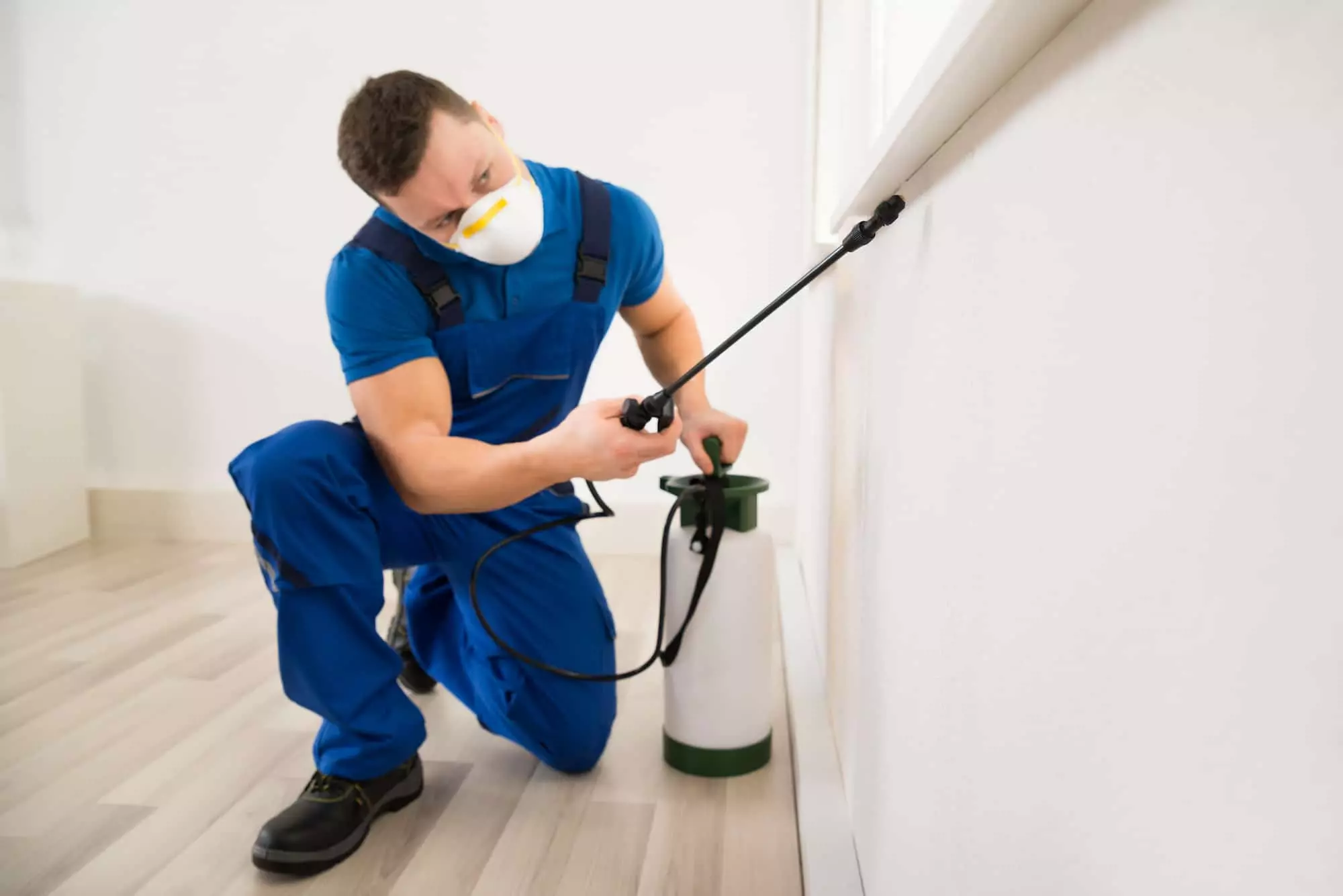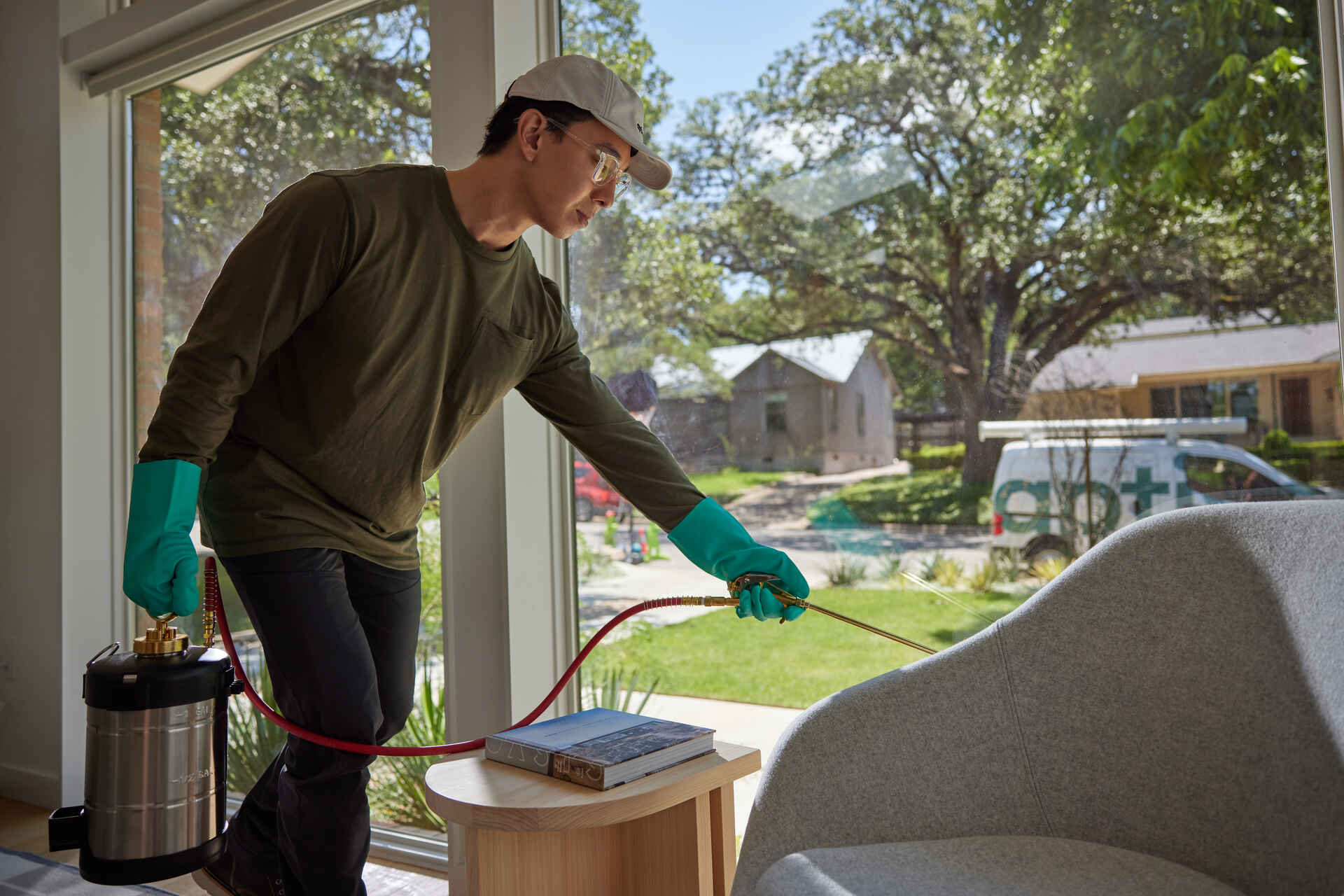A1 Commercial Pest Control Portland - Effective Bed Bug Solutions for Organizations
A1 Commercial Pest Control Portland - Effective Bed Bug Solutions for Organizations
Blog Article
Efficient Pest Control Providers: An Extensive Consider Extermination Techniques and Avoidance Procedures
In the realm of bug control solutions, the successful monitoring of problems needs a careful approach that combines numerous methods and measures for both removal and avoidance. From Integrated Pest Monitoring (IPM) techniques that focus on lasting solutions to chemical extermination strategies made for targeted elimination, the collection against insects is diverse and large. Biological control approaches and physical avoidance procedures provide different paths to successfully combating undesirable burglars. Nevertheless, the trick to a detailed parasite control strategy lies not simply in the strategies themselves, however also in the careful specialist assessment treatments that come before and educate them. By comprehending the complexities of each technique and how they interaction, one can genuinely grasp the intricacy and efficiency of modern bug control services.

Integrated Bug Management (IPM) Techniques
Integrated Bug Management (IPM) Techniques include an extensive approach to pest control that concentrates on monitoring, control, and avoidance techniques to efficiently take care of insect populations. By incorporating various strategies, IPM intends to minimize the influence of bugs while additionally reducing the dependence on chemical pesticides. Prevention exists at the core of IPM, stressing techniques like correct cleanliness, upkeep of health, and securing access points to hinder bugs from infesting structures.
Chemical Extermination Techniques
Chemical extermination strategies are commonly used in parasite control solutions to successfully eradicate parasite populaces that present a risk to human health and residential or commercial property. These methods include using various chemical substances specifically made to target and get rid of insects such as bugs, rodents, and various other unwanted animals. The application of pesticides, insecticides, rodenticides, and various other chemical agents is meticulously regulated to make sure maximum efficiency while decreasing risks to human beings, family pets, and the setting.
Among the key benefits of chemical elimination strategies is their ability to provide fast and targeted results, making them particularly useful in situations of serious infestations or immediate insect control requirements - a1 pest control portland bed bugs. Nonetheless, it is vital to highlight the value of correct handling, application, and disposal of these chemical items to avoid unexpected harm
Furthermore, integrated parasite administration (IPM) methods typically combine chemical elimination techniques with various other approaches such as cleanliness, habitat adjustment, and biological controls to create a extensive and sustainable pest control technique. By including chemical elimination strategies deliberately within an IPM framework, bug control services can properly manage pest populations while reducing possible dangers to human wellness and the environment.
Biological Pest Control Methods
Using all-natural predators and parasites to manage bug populations is a sustainable method referred to as biological parasite control. This strategy uses the all-natural devices of the ecosystem to regulate insect populaces without depending on artificial chemicals. One typical organic control approach involves introducing natural adversaries pest control contracts of the target insect species, such as ladybugs for aphid control or nematodes for termite infestations. These natural predators prey on the bugs, assisting to maintain their populations in check.
An additional effective biological control strategy is the usage of microbial pesticides. These are normally taking place bacteria, such as infections, microorganisms, and fungi, that specifically target and infect particular insect types. By using these microbial agents, insect populaces can be successfully reduced without triggering or hurting helpful organisms injury to the setting.
Physical Bug Prevention Actions
Implementing physical bug prevention steps involves using barriers and architectural adjustments to discourage pests from going into or infesting a building (a1 portland bed bug exterminator). One reliable method is securing all possible entry points such as voids around doors, windows, and utility infiltrations. Setting up door moves, displays on windows, and securing cracks in the structure can help avoid bugs like bugs and rodents from getting gain access to inside your home. In addition, keeping a clutter-free and clean atmosphere is essential as pests are brought in to food resources and hiding places. Routinely evaluating and repairing any kind of damaged screens, vents, or roofing ceramic tiles can additionally assist in maintaining parasites out.
One more physical avoidance step is using obstacles like fencing to maintain larger insects such as raccoons or deer away from the residential or commercial property. Setting up mesh or cord displays around yards can secure plants from being damaged by bugs. Correct waste administration, consisting content of safeguarding trash bin with tight-fitting covers, is important in discouraging pests like raccoons, pests, and rats. By applying these physical bug avoidance steps, residential property proprietors can substantially lower the danger of parasite infestations and the damage they can trigger.
Specialist Insect Inspection Treatments
Carrying out methodical and thorough insect examinations is a fundamental aspect of professional pest administration methods. Expert parasite inspectors are trained to meticulously examine residential or commercial properties for indicators of infestations, determining pest varieties, access factors, and helpful conditions. The assessment process generally starts with a detailed evaluation of both the interior and exterior exterminators around me of the facilities. This involves monitoring for bug droppings, munch marks, nests, and any kind of structural damage that might suggest insect activity. In addition, assessors may make use of specific devices such as moisture meters and borescopes to discover surprise infestations within wall surfaces or crawl areas.

Conclusion
To conclude, efficient parasite control solutions utilize a range of strategies, including Integrated Bug Administration approaches, chemical extermination approaches, organic controls, and physical avoidance measures. Specialist insect evaluation procedures play an essential function in recognizing and dealing with pest problems in a prompt way. By implementing a mix of these methods, homeowner can successfully manage and avoid insect invasions.
From Integrated Pest Administration (IPM) methods that focus on lasting options to chemical elimination techniques created for targeted elimination, the collection against bugs is large and complex.Integrated Pest Administration (IPM) Strategies incorporate a comprehensive method to pest control that concentrates on control, prevention, and tracking techniques to properly take care of bug populations.Chemical elimination techniques are generally used in parasite control services to efficiently get rid of parasite populations that position a threat to human health and wellness and property.Using all-natural killers and parasites to handle insect populaces is a lasting approach known as biological bug control.In verdict, reliable pest control services use a variety of strategies, consisting of Integrated Parasite Monitoring methods, chemical extermination methods, biological controls, and physical prevention procedures.
Report this page